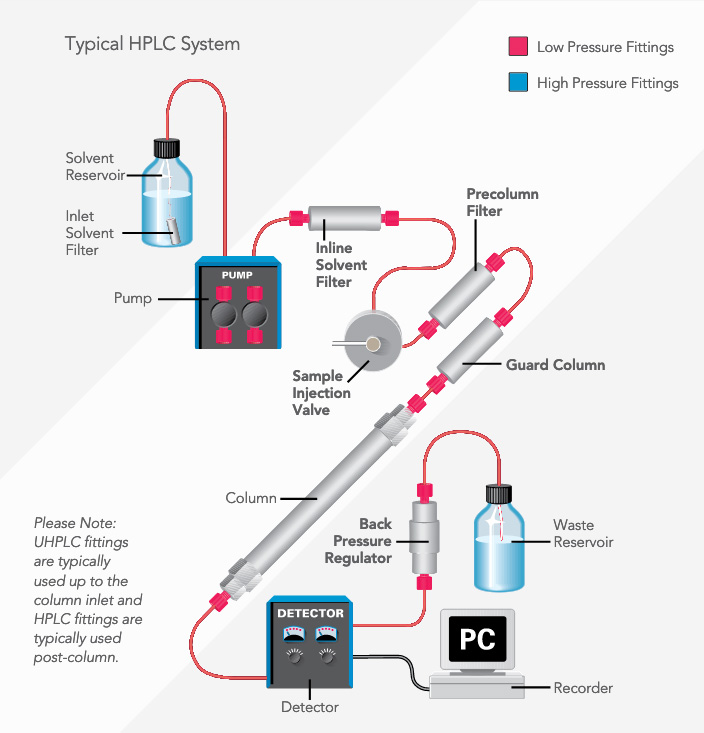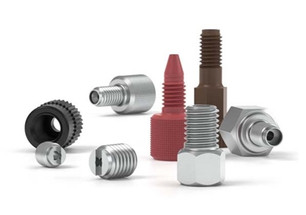10th Nov 2021
An Essential Guide to HPLC Fittings for Your Laboratory
An Introduction to HPLC Fittings
Fittings are used any time tubing needs to be attached, adapted, or adjusted throughout the system, so creating good connections with fittings is extremely important for successful chromatography. Throughout this blog I’ll discuss an essential list of fittings every chromatographer should have a good understanding of, and keep on hand at all times when performing HPLC. HPLC fittings come in a variety of materials and styles for different chemical compatibilities and functions.
"...creating good connections with fittings is extremely important for successful chromatography"
Typically, a “fitting” in analytical instruments is a combination of a nut and a ferrule. The nut is the part of the fitting that puts force on the ferrule, and the ferrule is the piece used to seal. To choose the right fitting, you’ll need to consider a number of factors such as the threading, geometry, sizes, material, and pressure requirements. For more information about these considerations, I would recommend reading our previous blog, “What Types of Fittings are used in HPLC?”. Check that out for more detailed information on the most common types of HPLC fittings. Let’s take a look at some of the types of fittings used in HPLC.
Fittings for Low Pressure
As you may know, HPLC stands for high pressure (or sometimes, high performance) liquid chromatography. However, not the entire system is under high pressures. Low pressure parts of the system include the section from the HPLC solvent bottle reservoirs to the pump inlet, as well as the sections after the HPLC column. In reality, the only high pressure sections on the HPLC are generally between the pump outlet and the column itself. The fittings used in low pressure applications are generally ¼-28 flat-bottom, and typically used with 1/8” OD tubing. Polymeric fittings are generally preferred for low pressure settings because they’re easier to work with.
Fittings for High Pressure
As mentioned above, there is only a small portion of the HPLC system that actually runs at high pressure. Polymeric fittings can still be used for high pressure settings in the system, but for super high pressure applications (such as UHPLC), metal nuts and ferrules should be used. Fittings in the high pressure zone are generally 10-32 coned fittings and used with1/16” OD (or smaller) tubing.
Typical HPLC System
Below is a visual representation of an HPLC system, color-coded to indicate where low and high pressure fittings are generally used.

Other Fittings used in HPLC
Besides the ¼-28 fittings and 10-32 fittings, there are some other common fittings used with HPLC. Many people use barbed fittings for tubing going into the HPLC waste container. Also, luer fittings are common for connecting syringes to tubing, or for an easy quick-connect (very low pressure) fittings. Other large bore, and less common fittings are also available through Chrom Tech.
Other Chromatography Consumables to Keep on Hand
Besides HPLC fittings, other chromatography consumables to keep on hand include:
- Chromatography Vials and closures
- Sample preparation consumables such as filters and/or SPE cartridges
- Tubing
- Columns
- Syringes
- Instrument-specific replacement parts
- Solvents and reagents
As a chromatography consumable supplier, Chrom Tech is able to help you keep all these supplies on hand so that you can keep your lab up and running.
About the Author

Jess has been with Chrom Tech since graduating from the University of Redlands in 2017 with a BS in chemistry. She works remotely for our team as the marketing coordinator, and spends her personal time exploring the beaches and mountains in California with her dog, Nisswa.

